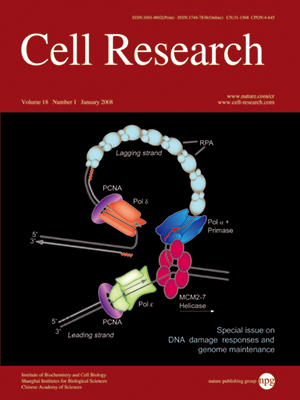
Volume 18, No 1, Jan 2008
ISSN: 1001-0602
EISSN: 1748-7838 2018
impact factor 17.848*
(Clarivate Analytics, 2019)
Volume 18 Issue 1, January 2008: 48-63
REVIEWS
XRCC1 and DNA polymerase β in cellular protection against cytotoxic DNA single-strand breaks
Julie K Horton1, Mary Watson2, Donna F Stefanick1, Daniel T Shaughnessy2, Jack A Taylor2 and Samuel H Wilson1
1Laboratory of Structural Biology, NIEHS, National Institutes of Health, Research Triangle Park, NC 27709, USA
2Laboratory of Molecular Carcinogenesis, NIEHS, National Institutes of Health, Research Triangle Park, NC 27709, USA
Correspondence: Samuel H Wilson(wilson5@niehs.nih.gov )
Single-strand breaks (SSBs) can occur in cells either directly, or indirectly following initiation of base excision repair (BER). SSBs generally have blocked termini lacking the conventional 5'-phosphate and 3'-hydroxyl groups and require further processing prior to DNA synthesis and ligation. XRCC1 is devoid of any known enzymatic activity, but it can physically interact with other proteins involved in all stages of the overlapping SSB repair and BER pathways, including those that conduct the rate-limiting end-tailoring, and in many cases can stimulate their enzymatic activities.
XRCC1-/- mouse fibroblasts are most hypersensitive to agents that produce DNA lesions repaired by monofunctional glycosylase-initiated BER and that result in formation of indirect SSBs. A requirement for the deoxyribose phosphate lyase activity of DNA polymerase β (pol β) is specific to this pathway, whereas pol β is implicated in gap-filling during repair of many types of SSBs. Elevated levels of strand breaks, and diminished repair, have been demonstrated in MMS-treated
XRCC1-/-, and to a lesser extent in
pol β-/- cell lines, compared with wild-type cells. Thus a strong correlation is observed between cellular sensitivity to MMS and the ability of cells to repair MMS-induced damage. Exposure of wild-type and
pol β-/- cells to an inhibitor of PARP activity dramatically potentiates MMS-induced cytotoxicity.
XRCC1-/- cells are also sensitized by PARP inhibition demonstrating that PARP-mediated poly(ADP-ribosyl)ation plays a role in modulation of cytotoxicity beyond recruitment of XRCC1 to sites of DNA damage.
Cell Research (2008) 18:48-63. doi: 10.1038/cr.2008.7; published online 1 January 2008
FULL TEXT | PDF
Browse 1845


